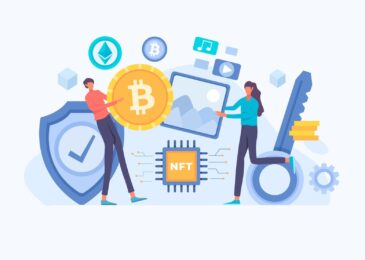How Do Digitization and Automation Help B2B Suppliers Reduce Costs?
How Do Digitization and Automation Help B2B Suppliers Reduce Costs?
Interpersonal communications are highly valued by B2B buyers, which leaves many B2B suppliers resistant to the idea of automation. In the consumer world, it is commonplace to order products from digital platforms based on limited information. The stakes are much higher in the business world; more money is involved, and buying the wrong product or the right product at the wrong price has serious implications.
B2B buyers want to talk to knowledgeable salespeople who represent manufacturers and distributors before making an initial purchase. They want to know a human is in the loop on contract negotiations, pricing, invoicing, and order processing. But once relationships are established, many B2B buyers show a strong preference for digital platforms and automated systems for repeat purchases.
Also Read – How Artificial Intelligence Will Dominate The E-commerce World?
According to a report from McKinsey Digital, 76 percent of B2B buyers want in-person support when buying new products or services. That falls to 15 percent when rebuying the same products and services. Half of buyers are happy to purchase different products from the same supplier without in-person support once the relationship has been established.
The best way to satisfy the desire of B2B buyers for digital procurement is ecommerce equipped with punchout catalogs. In addition to supplying the fast and direct sales that buyers want, ecommerce allows the seller’s platform to be integrated with the buyer’s eProcurement or spend management platform, facilitating automatic data communication and features including punchout catalogs, B2B order automation, and eInvoicing.
What Is B2B Automation?
Our world runs on automated systems. Modern cars automate many standard driving tasks, from parallel parking to lane-keeping. Digital assistants on our phones allow us to create appointments, make phone calls, send messages, play music, and more – all without lifting a finger.
The online services we use are, in reality, complex networks of microservices, each one seamlessly and automatically communicating with the others. Every day our inboxes fill with messages sent automatically and never seen by a human until we open them.
These networks of systems are different in many ways, but what ties them together is the communication of data between platforms and its transformation from one form to another. For example:
- Cars transform sensor data to mechanical control of steering and acceleration.
- Digital assistants turn voice commands into digital instructions intelligible to dozens of subsystems, each of which can return a specific type of information or carry out a particular action.
- Marketing automation platforms build “personalized” messages from sales and analytics data.
We rely on these automatic cross-connections and data exchanges to reduce the time we spend manually interacting with data, to free our attention for more useful tasks, to eliminate the errors that inevitably occur when a human is in the loop, and, in many cases, to save us money through increased efficiency.
B2B automation focuses on integrating buyer and seller digital platforms so that data can seamlessly be transferred during the procurement process. Punchout catalogs allow buyers to access catalogs and search for products within their business’s eProcurement platform. They also handle the transfer of order information from the catalog to the eProcurement platform. Requisition orders, purchase orders, and invoices are exchanged in the same way.
Automation doesn’t replace human action and interaction. It augments our capabilities and extends our reach, allowing us to focus on valuable tasks while machines do what they’re best at: flawlessly moving and transforming data.
B2B order automation, punch-out catalogs, and eProcurement integration don’t replace in-person sales. Nor do they remove humans from the procurement cycle. Requisition orders are approved by a human. Invoices are processed and paid by accounts payable automation software.
However, by allowing machines to handle the transfer of data between buyer and seller platforms, salespeople and other valuable employees are free to focus on adding value rather than shuffling data.
Reducing Costs With B2B Automation –
Work that can be done by machines doesn’t have to be done by people. That’s the most basic way in which digitization and automation reduce costs. Businesses don’t have to pay staff to talk to buyers on the phone or in-person every time they want to place an order. Nor do they have to pay staff to manually enter orders into eProcurement platforms or create invoices. But there are other benefits to automation.
More Efficient Use of Staff –
When employees spend less time on tasks that can be automated, they have more time to spend on work that adds value. Salespeople can spend their time supporting new buyers, rather than hand-holding buyers who would instead prefer to fill an ecommerce cart and hit the checkout (or punchout) button.
Up to Date Information –
Poor quality information is a significant cause of duplicate work, wasted time, and mistakes. Orders, buyer notes, and other useful information are often locked away in email inboxes if they are stored digitally at all.
By supporting automatic two-way data transfer, B2B sellers can access accurate and up-to-date information from the ecommerce application or a customer relationship management platform. They can be sure that they have the information they need to process orders in a timely fashion and respond to buyers’ needs.
Reliable information enhances the efficiency and accuracy of the sales process, increasing sales and customer retention while reducing duplication and mistakes.
Fewer Errors –
Mistakes cost money and damage relationships, and manual data entry is a pernicious source of procurement errors. Small errors such as the transposition of a digit in a purchase order can lead to million-dollar catastrophes – and these types of mistakes are more common than you might think on both sides of the transaction. Buyers introduce errors when making creating orders. Sellers introduce errors when processing orders and sending invoices.
Machines don’t make this type of error when moving information between platforms. When a buyer uses a punchout catalog, they can be sure that the quantities in the automatically generated requisition order created in their eProcurement platform are correct. When the requisition order is approved and a purchase order is automatically created in the seller’s ecommerce application, the seller can be confident that the quantities haven’t been changed by a typo.
The digitization of B2B sales through ecommerce increases sales and customer retention by giving buyers want they want: an easy-to-use alternative to traditional in-person sales that can be integrated with their eProcurement platform. In turn, integration empowers sellers to automate data interchange.
Together digitization, integration, and automation work to increase sales while reducing sales costs.
Author Bio –
 Brady Behrman is the CEO of PunchOut2Go, a PunchOut catalog developing company based in Virginia specializing in e-procurement to enable B2B commerce for suppliers to sell to buyers via Ariba, Jaggaer (formerly SciQuest), Coupa, SAP, Oracle, and other CXML environments. For more information on PunchOut2Go, be sure to check out their Facebook, Twitter, LinkedIn and YouTube pages.
Brady Behrman is the CEO of PunchOut2Go, a PunchOut catalog developing company based in Virginia specializing in e-procurement to enable B2B commerce for suppliers to sell to buyers via Ariba, Jaggaer (formerly SciQuest), Coupa, SAP, Oracle, and other CXML environments. For more information on PunchOut2Go, be sure to check out their Facebook, Twitter, LinkedIn and YouTube pages.
Also Read – How Does IoT Resolves Healthcare Industry Problems?





